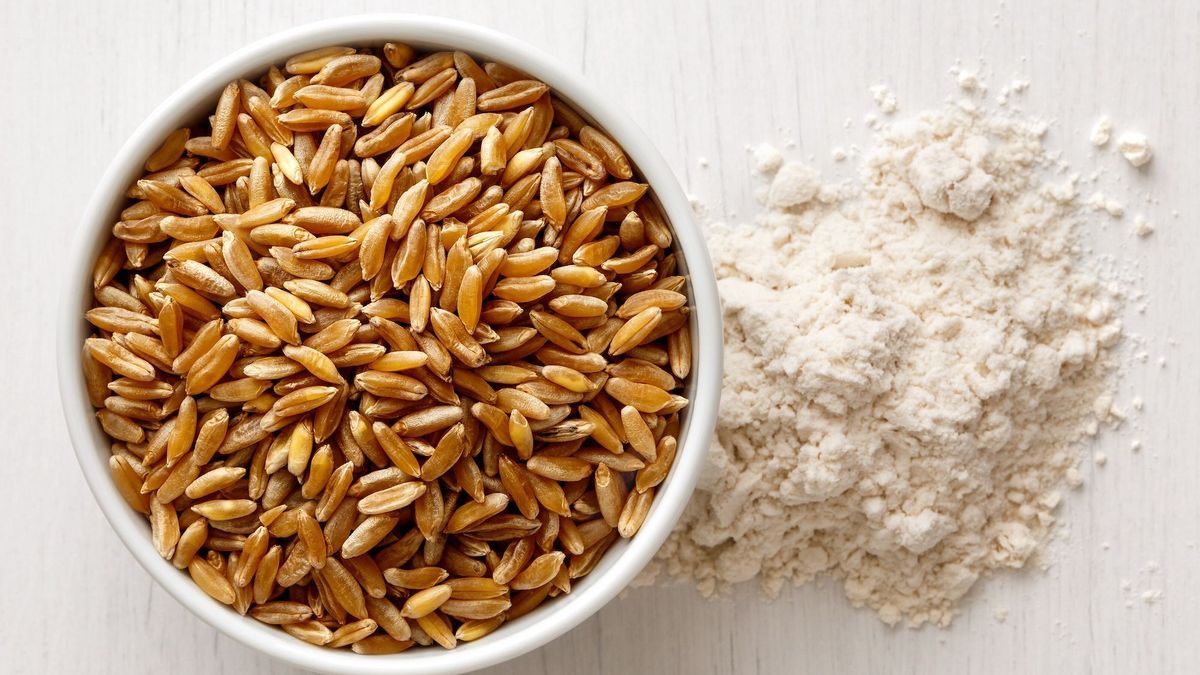
We know wheat, rye, buckwheat, spelt… but less well about Kamut, a cereal derived from wheat. What are the nutritional properties of this cereal? Does it contain gluten? How to cook it? The answers from Raphaël Gruman, dietitian nutritionist in Paris.
Cereal: What is kamut or khorasan wheat, and where is it grown?
Also known as khorasan wheat, kamut, is an ancient variety of wheat (Wheat turgidum ssp. Turanic) native to the fertile crescent region of the Middle East. It was initially cultivated several thousand years ago in Egypt and Mesopotamia.
The name “Kamut” is actually a trademark registered in 1990 by Mack and Bob Quinn, two Montana farmers who decided to cultivate this seed according to organic standards and strict quality criteria.
Today it is mainly grown in Armenia, Iran, Uzbekistan, Azerbaijan and Dagestan. “Kamut today remains a little-known and little-cultivated cereal because its yield is less interesting than that of wheat.” specifies Raphaël Gruman.
What are the benefits of kamut seeds or kamut flour?
Kamut, as a derivative of modern wheat, has an energy value very close to the latter, and therefore relatively similar benefits. Kamut, however, is significantly higher in protein and lower in carbohydrates than regular wheat. “It also contains beta carotene which is an antioxidant, whereas wheat lacks it.” adds the dietitian. On the vitamin side, it is rich in B group vitamins, vitamin E and vitamin K1. And on the mineral side, it is very well provided with magnesium, phosphorus, potassium, zinc and selenium.
Kamut is an interesting cereal for weight control, as it is a source of complex carbohydrates with a low glycemic index. It therefore makes it possible to provide the body with lasting energy, without causing a spike in blood sugar levels and excessive secretion of insulin. A source of fiber, Kamut is satiating and limits the absorption of sugars and fats from the meal. For cooking, we recommend choosing Kamut wholemeal flour, obtained from the whole grain, which therefore retains its fiber and all its nutritional benefits. Finally, kamut is trademarked, and is grown using organic methods, making it both beneficial for the environment and for its consumers who seek to avoid pesticides and chemical fertilizers.
Does it contain gluten?
Kamut is a wheat derivative, and therefore inevitably contains gluten. “However, Kamut is better tolerated than wheat by people sensitive to gluten, because it is less rich, and the variety of gluten it contains would be less aggressive than that contained in wheat.” specifies Raphaël Gruman. On the other hand, Kamut should not be consumed by people with celiac disease.
Kamut or spelled: what is the difference?
Just like Kamut, spelled is a variety of ancient wheat. Spelled is even one of the first types of domesticated wheat, and was long used in medieval Europe before giving way to modern wheat.
Nutritionally speaking, spelled is very close to modern wheat and Kamut. Its protein content is close to that of Kamut, therefore higher than that of wheat.
Taste-wise, kamut has a rich, slightly sweet flavor, with hints of hazelnut or butter, as well as a firm, chewy texture. “Spelled is more neutral in taste, and its texture is less firm than that of Kamut.” indicates the nutritionist.
Recipe: How to cook and cook kamut?
Kamut or khorasan wheat, is a whole grain, which requires prolonged cooking to become tender, while remaining firm to the bite. It is recommended to rinse it and leave it to soak overnight to facilitate its digestion and reduce its cooking time. It takes on average – and according to the instructions provided on the packaging – between an hour and an hour and a half of cooking in a large volume of boiling, salted water. Kamut seeds lend themselves to many recipes: in salads, stir-fried with vegetables, risotto style, with tomato sauce and a drizzle of olive oil, or even in tabbouleh… Kamut flour for its part , can be used to make bread but also to prepare biscuits, cakes, muffins, pancakes or even pasta.

